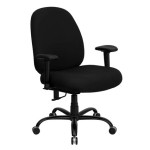Toilet Chair Height vs. Comfort Height: Understanding the Difference
When choosing a toilet, the height of the bowl is a crucial consideration that often gets overlooked. The traditional "standard" height has been the norm for decades, but recent trends have introduced "comfort height" toilets, promising a more ergonomic and comfortable experience. Understanding the differences between toilet chair height and comfort height is essential for making an informed decision that prioritizes both functionality and well-being.
Toilet Chair Height: The Traditional Standard
Toilet chair height, also referred to as standard height, is the traditional toilet bowl height that has been prevalent for many years. It typically ranges from 14.5 to 15 inches from the floor to the top of the bowl. This height was designed based on the average height of people in the past and has become a familiar and established design element in most bathrooms.
While toilet chair height has served its purpose for a long time, it presents challenges for individuals with mobility issues or those who are shorter in stature. The lower seat height can make it difficult to get on and off the toilet, especially for people with knee or hip problems. It can also strain the back and legs, potentially leading to discomfort or pain.
Comfort Height: A More Ergonomic Option
Comfort height toilets, also known as ADA-compliant toilets, address the shortcomings of traditional chair height toilets by offering a higher seat height. They typically range from 17 to 19 inches from the floor to the top of the bowl, making it easier to sit and stand. This increased height brings the toilet seat closer to the height of a standard chair, reducing strain and improving accessibility.
The benefits of comfort height toilets extend beyond ease of use. The higher seat height promotes better posture, minimizing pressure on the knees and back. It also reduces the risk of falls, which is a significant concern for seniors and individuals with mobility limitations. Comfort height toilets are particularly beneficial for people with arthritis, osteoporosis, or other conditions that affect their mobility.
Factors to Consider When Choosing Toilet Height
The optimal toilet height depends on individual needs and preferences, but several factors can influence the decision:
1. Height and Mobility
Individuals who are shorter or have mobility issues generally benefit from comfort height toilets. The higher seat height makes it easier to transfer from a wheelchair or walker and reduces the strain on the knees and hips. For taller individuals, comfort height toilets may provide a more comfortable and ergonomic experience as well.
2. Bathroom Design
The existing bathroom design can influence toilet height selection. If the bathroom has limited space, a standard chair height toilet might be a better fit. However, if space is not a constraint, a comfort height toilet allows for a more accessible and ergonomic experience.
3. Personal Preferences
Ultimately, the decision comes down to personal preferences. Although comfort height toilets offer various advantages, some individuals may prefer the traditional chair height for familiarity or aesthetic reasons.
It is essential to consider the needs and preferences of all users when selecting a toilet. Consulting with a healthcare professional or a bathroom remodeling expert can help ensure the best choice for your specific circumstances.

Standard Height Vs Comfort Toilets Henry Plumbing

Toilet Height Let S Clear Up The Confusion

Chair Height Vs Standard Toilet What S The Difference

Standard Height Vs Comfort Toilet Which Is Better

Comfort Height Vs Standard Toilet Roberts Plumbing Inc

Find The Loo That S Right For You Gerber Toilets

5 Essential Tips For Toilet Installation Rescue Plumbing Blog

Comfort Height Toilets Everything You Need To Know About Them

How To Choose The Right Toilet Seat A Guide Comfort And Function

How High Should A Toilet Seat Be In My Humble Opinion Straight Dope Message Board








